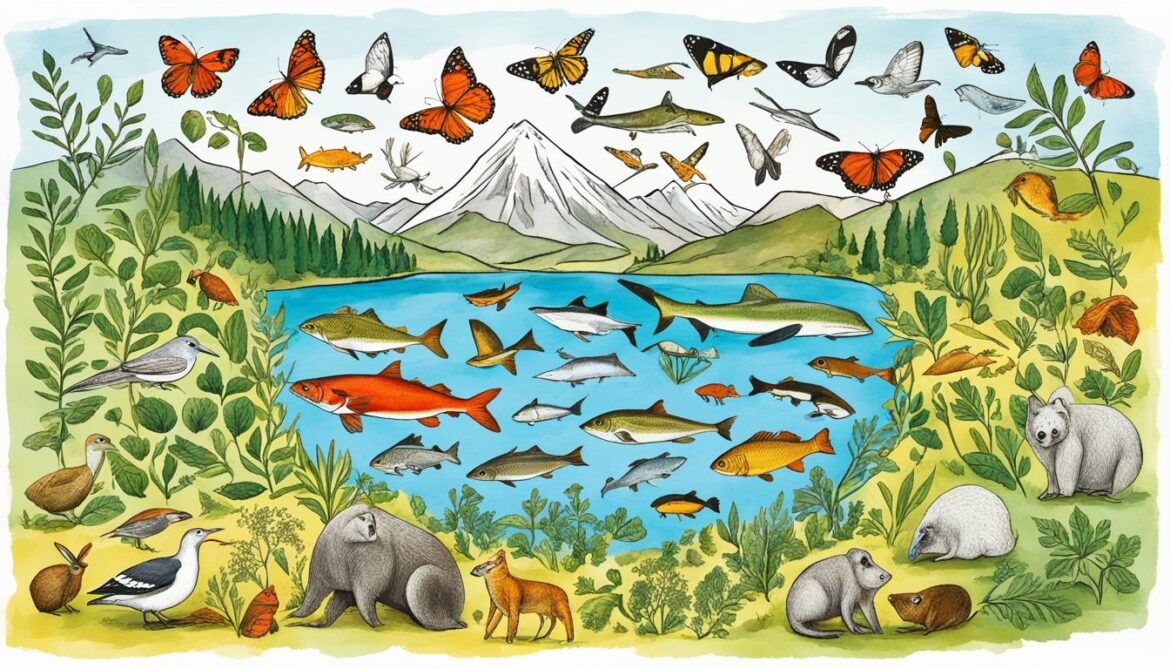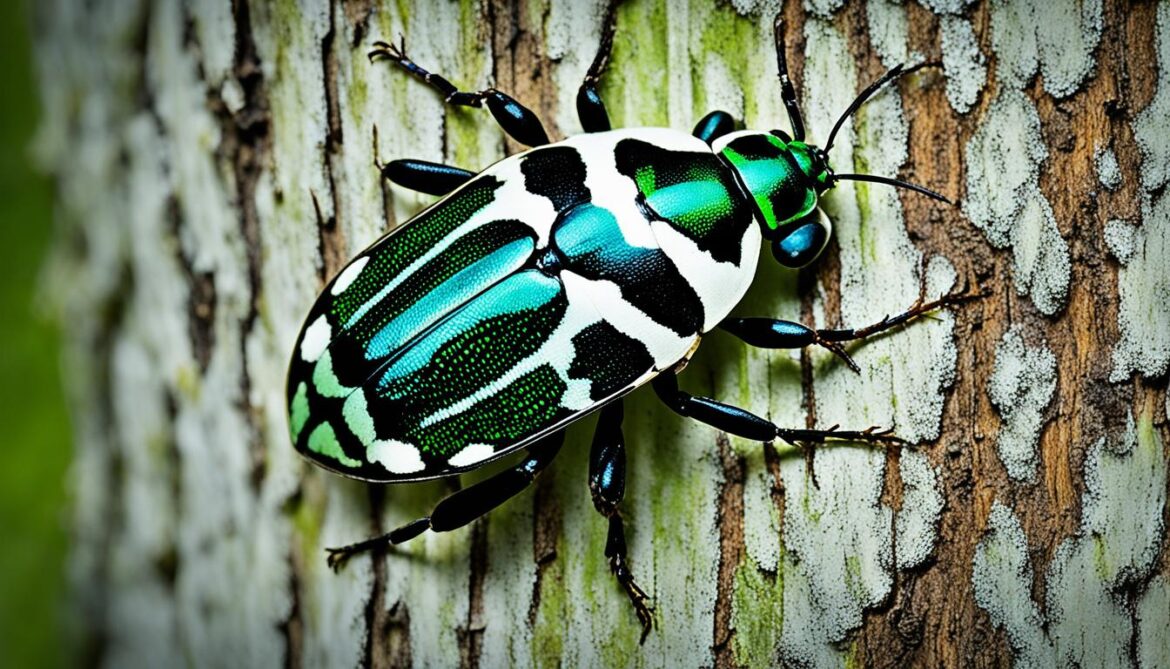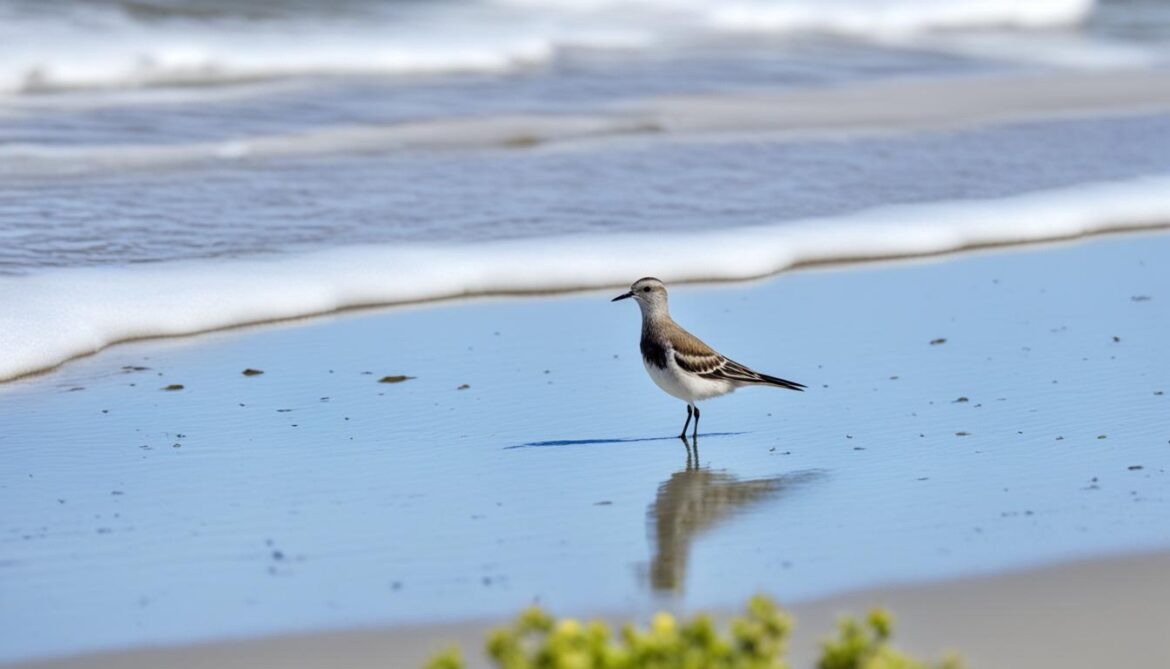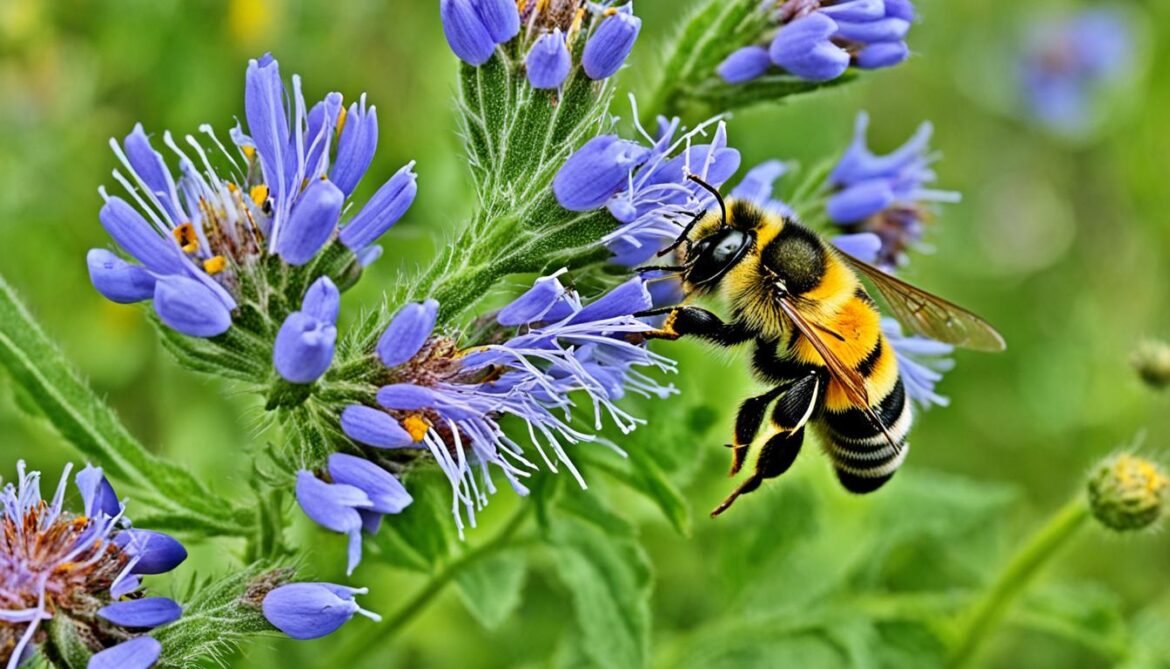Italy Biodiversity: Animal and Plant Species and What Is Under Threat
Italy is renowned for its stunning landscapes, rich cultural heritage, and mouth-watering cuisine. But beneath its picturesque surface lies a hidden gem – its incredible biodiversity. From the snow-capped peaks of the Alps to the sun-kissed shores of the Mediterranean, Italy is home to a vast array of flora and fauna that make up its natural heritage.
Italy’s unique geographical location, diverse ecosystems, and favorable climatic conditions have resulted in a remarkable variety of animal and plant species. The country boasts the presence of over 57,000 different species, with a significant number being endemic – found exclusively within Italy’s borders.
However, this diverse natural heritage is under threat. Intense human pressure, including deforestation, pollution, urbanization, and climate change, has led to the degradation and loss of habitats, putting many species at risk of extinction. It is crucial for Italy to take immediate action to protect and preserve its biodiversity for the benefit of future generations.
Key Takeaways:
- Italy is home to a rich variety of animal and plant species, making it one of the world’s biodiversity hotspots.
- Endemic species, found exclusively within Italy’s borders, are particularly vulnerable to habitat degradation and loss.
- Human activities such as deforestation, pollution, and urbanization pose significant threats to Italy’s biodiversity.
- Preserving Italy’s natural heritage is essential for maintaining the balance of ecosystems and ensuring the survival of unique species.
- Conservation initiatives and sustainable practices are crucial to safeguarding Italy’s biodiversity for future generations.
Implementation of the NBSAP
The National Biodiversity Strategy (NBS) in Italy aims to integrate biodiversity conservation targets and sustainable use of natural resources within sectoral policies. The NBS focuses on key issues such as biodiversity and ecosystem services, biodiversity and climate change, and biodiversity and economic policies.
Efforts have been made to achieve the Aichi Biodiversity Targets, with a strong governance system and the establishment of protected areas and dedicated portals for biodiversity conservation. The NBSAP recognizes the importance of collaboration between government, non-governmental organizations, and local communities to implement effective conservation measures.
The integration of biodiversity in sectoral policies, such as agriculture, forestry, and fisheries, ensures that conservation efforts are embedded in various aspects of society and the economy. This holistic approach promotes environmental preservation in Italy and creates a foundation for sustainable development.
Key Objectives of the NBSAP:
- Promote biodiversity conservation through the development of protected areas and the restoration of degraded habitats.
- Enhance the sustainable use of natural resources, balancing human needs and ecological integrity.
- Integrate biodiversity considerations into climate change mitigation and adaptation strategies.
- Strengthen the governance and institutional frameworks for biodiversity conservation.
- Encourage research, monitoring, and education to promote biodiversity awareness and understanding.
“The NBSAP aims to preserve Italy’s rich biodiversity for future generations by integrating conservation efforts with sustainable development.” – Ministry for the Environment, Land and Sea
The NBSAP has resulted in the establishment of protected areas, which safeguard vulnerable ecosystems and provide habitats for endangered species. Moreover, dedicated portals, such as the Italian Biodiversity Portal, serve as valuable resources for information sharing, research, and collaboration among stakeholders.
| Achievements of the NBSAP | Examples |
|---|---|
| Establishment of protected areas | Gran Paradiso National Park, Cinque Terre National Park |
| Implementation of habitat restoration projects | Reforestation efforts in the Apennine Mountains |
| Promotion of sustainable agriculture | Encouraging organic farming practices |
| Integration of biodiversity in urban planning | Incorporation of green spaces and nature-based solutions |
Actions taken to achieve the 2020 Aichi Biodiversity Targets
Italy is dedicated to the conservation and sustainable protection of its rich biodiversity. To accomplish the 2020 Aichi Biodiversity Targets, significant efforts have been made to implement the National Biodiversity Strategy. This strategy includes the establishment of key institutions to oversee and coordinate biodiversity conservation initiatives.
The National Biodiversity Committee
One of the pivotal actions taken is the formation of the National Biodiversity Committee. This governance body consists of representatives from relevant sectors, including government agencies, research institutions, and non-governmental organizations (NGOs). The committee provides guidance and coordination to ensure the effective implementation of biodiversity conservation measures throughout Italy.
The National Biodiversity Observatory
Another significant milestone is the establishment of the National Biodiversity Observatory. This observatory serves as a centralized hub for data collection, analysis, and knowledge sharing. It plays a crucial role in monitoring the state of biodiversity in Italy and identifying conservation priorities and actions.
The midterm review of the National Biodiversity Strategy emphasizes the need for enhanced communication activities and collaboration between public and private entities. Effective communication fosters awareness and understanding of the importance of biodiversity conservation among the general public, businesses, and policymakers. Furthermore, it encourages active participation and support for sustainable wildlife protection efforts.
“Conservation efforts thrive when various stakeholders work together towards a common goal of preserving Italy’s natural heritage and biodiversity.”
Collaboration between public entities, NGOs, local communities, and private businesses is essential in achieving the Aichi Biodiversity Targets. By combining expertise, resources, and knowledge, these partnerships can develop innovative and effective strategies to ensure the long-term conservation and sustainable use of Italy’s biodiversity.

To strengthen these collaborative efforts, Italy continues to invest in adequate funding for biodiversity protection. Secure financial resources are crucial for the implementation of conservation projects and the establishment of protected areas. Italy leverages EU Structural Funds, direct EU funds, and market-based instruments, such as payment for ecosystem services, to mobilize financial support for sustainable wildlife protection.
Italy’s commitment to achieving the 2020 Aichi Biodiversity Targets demonstrates its dedication to preserving its natural heritage. With robust governance structures, enhanced communication strategies, and collaborative partnerships, Italy is making significant strides in protecting its biodiversity for future generations.
Support mechanisms for national implementation
Italy recognizes the importance of protecting its diverse Italy Biodiversity and has established a robust regulatory framework to support conservation efforts. Legislation plays a crucial role in providing the necessary tools and guidelines for projects and actions aimed at safeguarding Italian Conservation Efforts and preserving its natural heritage.
The Ministry for the Environment, Land and Sea takes the lead in implementing the National Biodiversity Strategy, coordinating and overseeing the country’s biodiversity conservation initiatives. It works closely with relevant stakeholders to ensure effective implementation of conservation measures and to promote sustainable practices.
Funding for biodiversity protection in Italy comes from various sources, including EU Structural Funds and direct EU funds. These financial resources provide vital support to conservation projects, enabling the implementation of actions that contribute to the preservation of Biodiversity Protection in Italy.
“Italy’s commitment to biodiversity conservation is reflected in the legislation and funding mechanisms in place. Through concerted efforts and collaboration, we can ensure the long-term sustainability of Italy’s Italy Biodiversity and protect the invaluable natural treasures it holds.” – Minister of Environment, Land and Sea
Market-based instruments, such as payment for ecosystem services, have also been introduced in Italy to mobilize financial resources for biodiversity conservation. These mechanisms incentivize individuals and organizations to contribute to the protection and restoration of ecosystems, ensuring the continued provision of essential Ecosystem Services.
Legislation for Biodiversity Protection
Italy has enacted legislation that specifically addresses the protection and conservation of Italy Biodiversity. The Nature Conservation Law sets out regulations and measures for the preservation of natural habitats and species. It establishes protected areas, such as national parks and nature reserves, to safeguard critical ecosystems and their associated biodiversity.
The Environmental Impact Assessment (EIA) process is another important tool for biodiversity protection in Italy. It requires developers to assess and mitigate potential environmental impacts before undertaking projects that could affect sensitive habitats or species. This ensures that appropriate measures are taken to minimize negative impacts on Italian Conservation Efforts and preserve biodiversity.
The Water Framework Directive and the Habitats Directive are European Union directives that have been transposed into Italian law. These directives establish legal frameworks for the protection and restoration of aquatic ecosystems and the preservation of habitats and species of European importance, respectively.
| Legislation | Purpose |
|---|---|
| Nature Conservation Law | Preservation of natural habitats and species |
| Environmental Impact Assessment | Assessing and mitigating potential environmental impacts |
| Water Framework Directive | Protection and restoration of aquatic ecosystems |
| Habitats Directive | Preservation of habitats and species of European importance |
These legislations collectively provide a comprehensive framework for biodiversity protection in Italy. Compliance with these laws is essential to ensure the continued health and sustainability of Biodiversity Protection efforts in the country.

What is the situation of biodiversity in Italy?
Italy’s biodiversity is truly remarkable, thanks to its diverse range of habitats and climates. The country is known for hosting a significant number of unique and native species, making it a biodiversity hotspot. However, Italy’s biodiversity faces severe threats from human activities, particularly habitat destruction and fragmentation.
Urgent conservation measures are crucial to protect and preserve Italy’s biodiversity for future generations. By addressing these challenges head-on, we can ensure the long-term sustainability and resilience of Italy’s natural ecosystems.
“Italy’s remarkable biodiversity is a precious resource that must be cherished and safeguarded. It is not only essential for the health of our ecosystems but also crucial for the well-being of future generations.”
Biodiversity hotspots in Italy are regions that demonstrate exceptional biodiversity and are of significant conservation concern. These hotspots serve as critical areas for preserving unique habitats and species, safeguarding their delicate balance and ecological functions.
Italy’s diverse range of ecosystems contributes to its ecosystem diversity. From the scenic coastlines to the majestic mountains, each region offers a distinct environment that supports a wide array of flora and fauna. Protecting these ecosystems is essential for the overall health and sustainability of Italy’s biodiversity.
The Impact of Human Activities on Italy’s Biodiversity
Human activities, such as urbanization, intensive agriculture, and deforestation, have had a detrimental impact on Italy’s biodiversity. The conversion of natural habitats into urban landscapes or farmland disrupts the natural balance and displaces countless species.
The fragmentation of habitats leads to isolated populations and reduces genetic diversity. This can weaken the resilience of species and make them more susceptible to environmental changes and disease.
“The destruction of our natural habitats and the subsequent loss of biodiversity is a pressing concern that requires immediate action. It is our responsibility to change our practices and protect the delicate ecosystems that support life on Earth.”
The loss of biodiversity in Italy affects not only wildlife but also ecosystems as a whole. Each species plays a unique role in maintaining ecological balance, and the loss of even a single species can have far-reaching consequences.
It is vital that we recognize the value of biodiversity and commit to conservation efforts to reverse the decline. This includes the creation of protected areas, restoration of degraded habitats, and sustainable management of natural resources.
The Future of Biodiversity in Italy
The future of Italy’s biodiversity rests in our hands. It is crucial for policymakers, scientists, conservation organizations, and individuals to collaborate and take action to address the threats facing our natural heritage.
By promoting sustainable practices, raising awareness about the importance of biodiversity, and implementing effective conservation strategies, we can protect Italy’s unique ecosystems and ensure a sustainable future for the country’s biodiversity.
Together, we can make a difference and safeguard Italy’s rich biological heritage for generations to come.

What is the Rosalia Alpina?
The Rosalia Alpina is a blue and grey insect native to the mountain forests of central and eastern Europe. This beautiful beetle, also known as Rosalia longicorn, is a species that represents Italy’s biodiversity. Unfortunately, it is currently classified as a vulnerable species, primarily due to the destruction of its natural habitat: mature beech forests.
These forests, which provide the necessary conditions for the Rosalia Alpina’s survival, are facing severe threats. The felling of older plants, carried out for various reasons, and the removal of dead or declining trees have compromised the living environment of this fascinating insect.
The Rosalia Alpina plays a crucial role in maintaining the balance of forests. As a saproxylic species, it relies on decaying wood for its reproduction. By feeding on and breeding in dead and decaying trees, it contributes to the natural recycling of nutrients and the breakdown of organic matter, which in turn influences the ecological health of the forest ecosystem.
Conservation efforts are urgently needed to protect the Rosalia Alpina and its habitat. By safeguarding these majestic beech forests, we can ensure the survival of this species and promote the overall health of Italy’s biodiversity.
Threats to Wildlife in Italy
Italy’s rich biodiversity is not limited to the Rosalia Alpina. The country is home to a diverse range of plant and animal species, many of which face threats to their survival. Human activities such as habitat destruction, pollution, climate change, and illegal wildlife trade are putting immense pressure on Italy’s wildlife population.
Conservation efforts and stringent environmental policies are crucial in protecting endangered species and preserving their habitats. It is only through collective action and a shared commitment to preserving Italy’s natural heritage that we can ensure the survival and well-being of the Rosalia Alpina and other vulnerable species.

| Species | Status |
|---|---|
| Rosalia Alpina | Vulnerable |
| Marsican Brown Bear | Critically Endangered |
| Sardinian Pika | Endangered |
| Apennine Chamois | Near Threatened |
What is the Fratino or Charadrius alexandrinus?
The Fratino, also known as Charadrius alexandrinus, is a small wading bird that finds its habitat in wet environments, particularly coastal areas. It is currently classified as endangered due to the destruction and alteration of its dune and coastal habitat. Human activities such as beach cleaning and the over-exploitation of natural coastal areas pose significant threats. Conservation efforts should focus on the preservation of these vital habitats.
Conservation Challenges
The Fratino bird faces multiple challenges that threaten its survival:
- Coastal Habitat Loss and Fragmentation: The destruction and alteration of dune and coastal habitats due to urbanization, tourism, and coastal development result in the loss of suitable nesting and feeding grounds for the Fratino.
- Human Activities: Beach cleaning, recreational activities, and disturbance from human presence in coastal areas disrupt the breeding and foraging behavior of the Fratino, negatively impacting its population.
- Over-exploitation of Natural Coastal Areas: The exploitation of coastal areas for construction, industrial activities, and infrastructure development further degrades the Fratino’s habitat and restricts its ability to find suitable nesting sites.
Conservation Strategies
To preserve the Fratino and its coastal habitats, the following conservation strategies should be implemented:
- Protect and Restore Coastal Habitats: Establish protected areas and create measures to ensure the conservation and restoration of dunes, coastal marshes, and other vital habitats for the Fratino.
- Educational Awareness: Increase public awareness about the ecological importance of coastal habitats and the threats faced by the Fratino, encouraging responsible behavior and sustainable use of coastal resources.
- Collaborative Efforts: Foster partnerships between governments, NGOs, and local communities to develop and implement comprehensive conservation plans, focusing on habitat restoration, regulation of human activities, and monitoring of Fratino populations.
“Preserving the fragile coastal habitats is essential for the survival of endangered species like the Fratino. Through collaborative efforts and targeted conservation actions, we can ensure the long-term viability of these unique ecosystems and protect the biodiversity of Italy’s coasts.” – Dr. Maria Rossi, Coastal Ecologist
By implementing these conservation strategies, we can help safeguard the Fratino bird and ensure the preservation of its coastal habitat for future generations.

What is Andrena Siciliana?
Andrena Siciliana is a critically endangered mining bee endemic to Sicily. This species plays a crucial role in the pollination process, contributing to the biodiversity of the island. However, the destruction of its natural habitat and the use of pesticides have put Andrena Siciliana at risk of extinction.
To protect this important pollinator and maintain Sicily’s plant biodiversity, conservation efforts need to be intensified. It is essential to prioritize the preservation of Andrena Siciliana’s habitat and implement sustainable farming practices that minimize the use of harmful pesticides.
The conservation of Andrena Siciliana is not only vital for the survival of this unique species but also for the overall health and balance of Sicily’s ecosystems. As a pollinator, Andrena Siciliana plays a crucial role in facilitating the reproduction of flowering plants, contributing to the diversity and abundance of plant species in the region.

The image above depicts the intricate relationship between Andrena Siciliana and the plants it pollinates. Through their symbiotic partnership, both species thrive, allowing Sicily’s biodiversity to flourish.
Conclusion
Italy’s biodiversity is a valuable natural heritage that is currently facing significant threats. Conservation efforts play a crucial role in protecting and preserving Italy’s diverse ecosystems and species. The National Biodiversity Strategy, which integrates biodiversity conservation targets into sectoral policies, is a step in the right direction.
However, more concerted efforts are needed at all levels to address the challenges and ensure the future of biodiversity in Italy. Stakeholders, including government bodies, NGOs, and local communities, must collaborate to implement robust conservation measures and promote sustainable practices.
The future of biodiversity in Italy depends on proactive measures to mitigate habitat destruction, combat invasive species, and promote sustainable resource use. It is crucial to raise awareness among the public and encourage responsible actions that support the protection of Italy’s unique flora and fauna.
By safeguarding Italy’s natural heritage today, we can create a sustainable future for generations to come. Let us work together to preserve Italy’s biodiversity and ensure that its rich ecosystems continue to thrive.








